Kerala is famous for its typical vegetarian dish served on banana leaf, and it is usually served as a part of regional festivals like Vishu and Onam, apart from marriage functions, engagements etc. A typical Kerala dish may contain items ranging from 15 to 30 or more, and do you know items served may differ from place from place. The rule for serving dishes may also slightly differ in different regions though serving on a banana leaf is must. Through this column I would like to describe the various dishes served in Thiruvananthapuram – State capital, and the order in which it is served.

A Typical Thiruvananthapuram Sadya
I would like to tell, among all styles of serving Kerala sadya, it’s only in Thiruvananthapuram where rules are strictly followed. Also the maximum number of dishes is served in Thiruvananthapuram style. I am not sure if it’s the influence of Tamil culture on Ananthapuri people. But as we travel from south to Kerala, no: of dishes served for Kerala sadya gradually reduces in number.
What are the dishes served in a typical Thiruvananthapuram sadya?
Starting with pickles and banana chips, minimum 7-9 side dishes will be served on plantain leaf before rice is served with daal in a Thiruvananthapuram sadya. 7-9 dishes are compulsory, particularly in marriage functions, and it may increase to 15 or more based on the financial status of the serving party. Only odd number of side dishes will be served, and in a normal sadya it has 9 or 11 side dishes.
Five curries will be compulsory served with rice in a typical Thiruvananthapuram style sadya, and over the years, that rule has not changed yet. I doubt if any other region of Kerala serves rice with five different curries – as per rules. That’s why I told, rules of serving dishes is strictly followed in Thiruvananthapuram only. There is one special dish called Koottukari with masala flavour, also called Neyyattinkara Koottukari served in south Thiruvananthapuram areas where Uzunnu Vada (made from Black gram daal) is also used.
Minimum three sweet pradhaman/payasams are compulsory in Thiruvananthapuram sadya, two to be served with banana, and one with boli or boondi. Sometimes one or more payasams may also be included. In most cases it ends with three, and in a very expensive sadya, more payasams may be added. As per rules, Ada Pradhaman is served first, followed by Kadala Pradhaman and last Vermicilli or rice payasams before pulissery is served.

Vermicilli Payasam
Now let me discuss in detail different dishes associated with Thiruvananthapuram style sadya, and the order in which they are served.
Banana chips and Sharkkara Upperi as starters

Chips and Upperi, both made from Nentra pazham – a type of long banana
Banana chips and Sharkkara Upperi are starters of Kerala sadya, placed on the extreme left end of plantain leaf. Salt and Curd chillies are also placed very often. Banana chips and Sharkkara Upperi are the common elements of a typical Kerala sadya, and placed as starters as well.

Curd Chillies

Pappadam
Banana and Pappadam on left bottom side of leaf
It’s mandatory to place pappadam and banana on left side of the leaf, when side dishes are served. Banana is rarely served on plantain leaf in sadya of middle Kerala that makes it different from southern style sadya. Banana is believed to be served aside pradhaman made of jaggery. Ada Pradhaman followed by Paripp Pradhaman is compulsory in this style, and people usually add banana or pappadam to taste pradhaman.
Usually number of bananas served will be equal to no: of jaggery pradhaman/payasams served, and normally banana of small types such as rasa kadali or palayankodan are served. If lengthy banana like mores is served, generally one will be provided for two payasams. One pappadam will be placed on the left end side of leaf, and banana on top.
Ginger, Curry Lemon and Mango – the first side dishes served

Inji Curry
Inchi Curry (Ginger Curry) is served first, followed by pickle-type dishes such as curry lemon, gooseberry and green mango. Mango is normally served as curd mango, adding curd to curry mango. But in some cases, both these dishes are served separately – with and without curd. No: of pickles may go high if sadya contains more number of items, and is grand. Usually ginger and lemon are served as pickles. Only vadukapuli (big lemon or curry lemon) is used to make sadya.
While Puli Inji is served in mid-Kerala in Thrissur-Ernakulam regions during wedding and Onam meals, Inji curry served in south Kerala. Puli Inji is sweet in nature, while we get distinct pungent aroma and taste of ginger in ginger curry served in south. After Inji curry, lemon curry and other pickles are placed in order on the leaf.

Naaranga Curry
Curd dishes – served as second set

Curd Mango – The Highlight among curd dishes of Thiruvananthapuram Sadya

Onion Raita
Following the curd mango, curd-added dishes like onion raita, kichadi, beetroot pachadi, bittergourd pachadi etc are served in order. Kichadi is usually made of white gourd (Kumbalam/Ilavan) and beetroot kichadi is a colourful and sweet dish found in south Kerala sadyas. Following the pickles, side dishes with curd as an ingredient will be served. It is begun with curd mango, a typical and tasty dish found in south Kerala sadya only. It’s not served in mid-Kerala.

Kichadi
Beetroot is grinded to a fine paste to make this colourful dish. Jaggery or sugar is added to give sweetness to the dish. It’s mandatory to serve a sweet side dish for Kerala sadyas, and in south Kerala regions, beetrood pachadi does that job. It’s the most colourful dish of the sadya, and kids love it a lot for its sweetness (me too, during by childhood days).

Beetroot Pachadi
If you want more number of dishes in your menu for your sadya, bitter gourd pachadi is a best option. It’s made in different ways, with or without sweetness for Kerala sadya, and definitely it’s yellow in colour.

Paavakka Pachadi
White coloured kichadi and raita are served first, followed by colourful pachadis. When items till pachadis are served on leaf, it will be almost 6 or 7 dishes minimum filling 3/4thof the upper side of the leaf. Usually these side dishes are served in a single line, and only once.
Cabbage Thoran, Avial and Koottucurry
It seems efforts are high to prepare and serve Sadya in Thiruvananthapuram style. Apart from beetroot pachadi, deep brown coloured cabbage thoran and also koottucurry are its highlights. Definitely these three are trademark dishes of Thiruvananthapuram style Kerala sadya.

Cabbage Thoran – A typical dish associated with Thiruvananthapuram Sadya
Soon after curd dishes are completed, cabbage thoran is served. I have not come across mizhikku puratti in south Kerala sadyas. So I am not sure if mizhikku puratti is served in grand sadyas of these regions. Cabbage thoran is a mandatory dish of south Kerala sadya and extreme efforts are required to prepare this tasty side dish. Cabbage is fried till dark brown colour, and frying urud daal along with them gives an extra flavour to thoran. Only cabbage is used to make thoran in a typical Thiruvananthapuram sadya.
Avial is a common dish to Kerala sadya and is served across the state. Though it’s believed to be a Tamil Nadu dish, it’s equally popular in Kerala also. It consists of a wide ranges of vegetables from banana and brinjal to carrot and cucumber, and extremely nutritious also. All vegetables are cut into 1 or 1.5 inch length pieces to make avail, and preparation method slightly differs from place to place.

Avial for Sadya
Neyyattinkara Koottucurry – The trademark dish of South Kerala Sadya

Neyyattinkara Koottucurry
This spicy side dish fills the space of non-vegetarian curries of a Kerala sadya. It’s time consuming to make this curry. But it tastes extremely delicious. It’s a potato curry prepared using both fried coconut gravy as well as coconut milk, and Kerala’s popular snack – uzhunnuvada is added to it. Similar to Kofta dishes of North India, it’s a south Indian variant. Rarely have we seen Kofta dishes with south Indian variants, and this dish can be categorized to it, though not fully.

Uzhunnu Vada added to Koottucurry
It’s served after all the side dishes are placed on the banana leaf, at the right end. It’s usually served soon after the first serve of rice and daal, on the right side top of the rice. i.e. First course of rice and Neyyattinkara Koottucurry are almost served simultaneously. When uzhunnuvada gets completely absorbed to potato curry, it resembles elephant yam pieces, and very often people mistake it to be a non-veg dish.
Rice is first served with parripp (green gram daal curry)
Green gram daal is used to prepare paripp curry, and rice is served first with paripp curry. Though daal curry can also be made using sambar daal (pigeon pea/toor daal), only green gram is used for typical Kerala sadya. Very often, green gram as whole is fried dry, removed the outer shell by crushing to get the daal for paripp curry. But people now go with easy and instant daal yellow in colour to prepare paripp curry.

Paripp Curry
Ghee, pappadam and Paripp Curry form an amazing combination to start with. During old days, ghee used to be served on the top of daal by sprinkling with a banana leaf stem. But nowadays the sight has disappeared. In regions till Kottayam, Paripp is the first curry served for Kerala sadya, while it has almost disappeared when reached middle-Kerala. But in some cases, they are placed as side dish as a sort of custom, particularly in Brahmin and similar communities.
Second serving with typical sambar
Sambar has so many variants across Kerala. Unlike Palakkad and Thrissur regions, coconut is not used in Thiruvananthapuram sambar. Thrissur sambar closely resembles Theeyal made in south Kerala, where fried coconut gravy is added to any sort of vegetables to make Theeyal. Sambar is the first curry served for Kerala sadya in mid-Kerala (Ernakulam, Thrissur etc), while South Kerala sadya starts with Paripp – that’s a major difference. Olan and Kaalan dishes are quite common and main dishes in Mid-Kerala sadya.

Thiruvananthapuram style Sambar
Sambar is a common curry served in almost every region of Kerala, and it’s a Tamil dish accepted by Kerala people. Similar to avial, it includes a huge range of vegetables for preparation. Raw banana, cluster beans, elephant yam, brinjal, cucumber, carrot, colacasia, okra, snake gourd and sambar chillies are some common vegetables.During marriage functions, pappadam are also added to sambar to make it thickened.
South Kerala uses distinct chillies for its cuisines, particularly sambar chillies – light green in colour, big in size, but with less chilly taste. It gives extra flavour and thickness to curries, and usually used with sambar, rasam and chicken curries.
All desserts will be served in one go

Ada Pradhaman – The first served dessert
Soon after second course of rice is served with sambar, there begins a procession of desserts – sweet payasams and pradhamans. In typical south Kerala dish, Ada pradhaman is served first followed by Kadala payasam made from daal of chickpeas. Sometimes one or more payasams or pradhamans are served soon after these two. Rarely have I seen substitutes to Ada pradhaman and kadala payasam. Wheat payasam and green gram payasam are also served very often. In mid-Kerala regions Ada Pradhaman with jaggery is served only during death ceremonies like Adiyantharam.

Paripp Pradhaman
Banana is the typical side dish of pradhaman with jaggery, and a few people also serve this sweet dish with pappadam. Pradhaman/Payasam will be served only on banana leaf in Thiruvananthapuram, while I have seen this practice not followed by mid-Kerala, particularly Thrissur. Thrissur – famous for Palada pradhaman usually provides desserts in glass one after another. Banana is not served here along with meals and people usually have banana after completing meal and wash off hands. Usually banana bunches will be hanged outside the hall, and people can take them as they wish.
South Kerala people prefer to have pradhaman and payasam on banana leaf itself. Later too they complete meal in the same leaf before it’s folded. Banana is served on the basis of no: of jaggery added pradhamans/payasams.
Milk added desserts served after jaggery pradhamans

Semiya Payasam
Boli is a typical Tamil sweet dish, yellow in colour and resembles a chappathi. It’s made using chickpeas daal and maida, adding white colour, sugar, cardamom powder, nutmeg powder and sesame oil. Nowadays, Boondi is also served as a substitute of boli for vermicelli payasam. One milk payasam is mandatory for south Kerala sadya, and as it goes grand, more payasams may be added. Once two or three types of jaggery payasams are served, milk added vermicelli or rice payasam is served. Very often Thrissur palada pradhaman is also served as a substitute or in addition to it. Boli is served as combo to this payasam, and if more than one milk payasam forms the part of the cuisine boondi is provided.

Palada and Boli
Usually boli or boondi is first placed on banana leaf and payasam on top. It goes without saying people serve payasam on banana leaf.
Three courses of rice in a row
Once these dishes are completed, we have almost finished a royal cuisine. Yet we need to complete some formalities. Though you don’t wish to serve rice anymore, it is better to complete the meals by serving a little pineapple pulissery, rasam, followed by buttermilk. Even if your stomach is completely filled and no more place left, you can serve a little of rasam and buttermilk by pouring into hands. By this way you are completing a procedure, without upsetting the stomach. Rasam and buttermilk helps you to increase digestion, and complete the meals neatly.
Starting with Pine Apple Pulissery

The sweet Pineapple Pulissery
Soon after desserts are completed, the third course of rice is served with pineapple pulissery – a sweet pulissery not seen in mid-Kerala like Thrissur. As rice and pulissery are served on the same banana leaf soon after payasams, it adds extra sweetness to rice. Olan is served as side dish on the right top of rice, and they together form a combo. Go through the link to get the recipe of Travancore Olan.
It’s prepared using white gourd, green chillies and red beans, adding coconut milk.

Olan served along with Pineapple Pulissery
Usually people serve a little rice with pulissery soon after payasam, though they skip the rest parts.
Rasam and buttermilk to complete the meals

Rasam
Soon after pulissery and olan are served with rice, rasam is the next curry. Similar to sambar and avial, rasam too is a typical Tamil Nadu dish, introduced to Kerala cuisines. Rasam forms a part of every typical Kerala Sadya. Very often people prefer to drink rasam a little bit though they don’t want to serve it along with rice as it catalyzes digestion. Same is the case of buttermilk.

Moru (Butter Milk) served as last item
The servings complete with buttermilk. Lemon skin, lemon leaves, curry leaves, coriander leaves and green chillies add distinct Kerala flavour to buttermilk, and loved by all. After completing the meal, people fold the leaves, and leave the place. It’s better to take rest a little rest after the heavy meals, and don’t wonder if you feel sleepy after serving a grand Kerala sadya.
Some common rules in serving Thiruvananthapuram sadya

I have noticed in Thrissur side and also many parts of Tamil Nadu, any dish will be served multiple times. But it’s entirely different in Thiruvananthapuram style, where they follow a strict style in serving. Like copybook shots of cricket, they follow a clear cut style in serving food.
No side dishes, payasams or curries will be served twice. Rice is served strictly five times in a course of meal. They serve everything in an orderly manner. Usually people are invited to serving hall after side dishes are served, just before rice. Usually nine to fifteen side dishes will be enough to serve whole course of rice. Koottukari is normally served along with first course of rice. Olan is served with Pulissery only. They follow a strict procedure, serving all dishes in the order described above.
As there are 5 curries, minimum three payasams and 9-15 types of side dishes, rarely an occasion arrives to serve a particular side dish or payasam twice. The serving people will complete the process in quick succession. Starting off serving in a silent fashion, they only ask people about serving rice course and curries after payasams are served. It’s needed so, as everyone doesn’t prefer to eat three courses of rice after two courses of rice plus payasams are over. Yet the curries will be served only in the order – Pulissery, Rasam and Moru (buttermilk).

Servings in southern regions of Kerala is quite contradictory to serving of food in Thrissur and middle Kerala, where any dish may be served repeated number of times. They too don’t follow a strict pattern in serving of food, and serve dishes in a random manner as per demand. They also repeatedly ask people if they want a particular dish or not. This procedure is quite uncommon in south Kerala. Only Matta rice (brown rice) is used for Thiruvananthapuram sadhya, while Cherumani (white rice) is served in Thrissur sadhya.
Payasams will never be served in glasses. Buttermilk may be served in glasses for kids. Except that every dish is served in banana leaf.
Read about differences between pradhamans and payasams – integral desserts of Kerala sadya.
N. B: All images are taken by the blogger and can’t be used without seeking permission.
You can read a few more articles related to Thiruvananthapuram- The capital city of Kerala, and the posts cover different topics. Here is the page link. Click on the images in the gallery to read
(Visited 5,136 times, 1 visits today)
































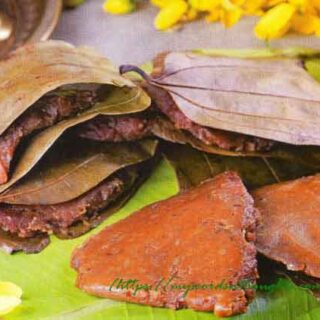

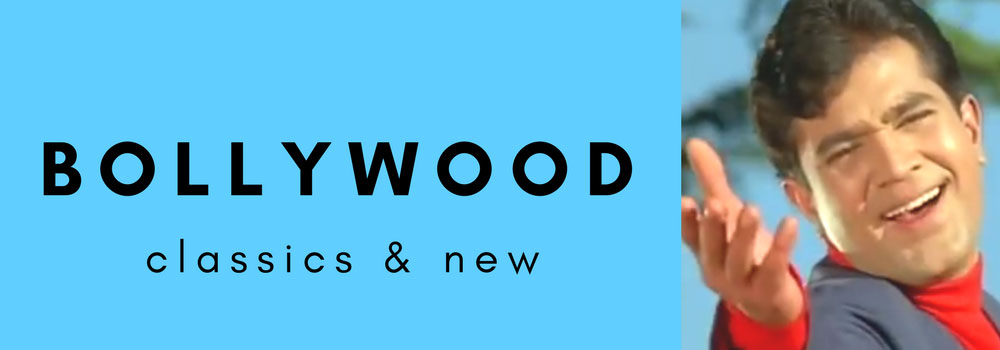

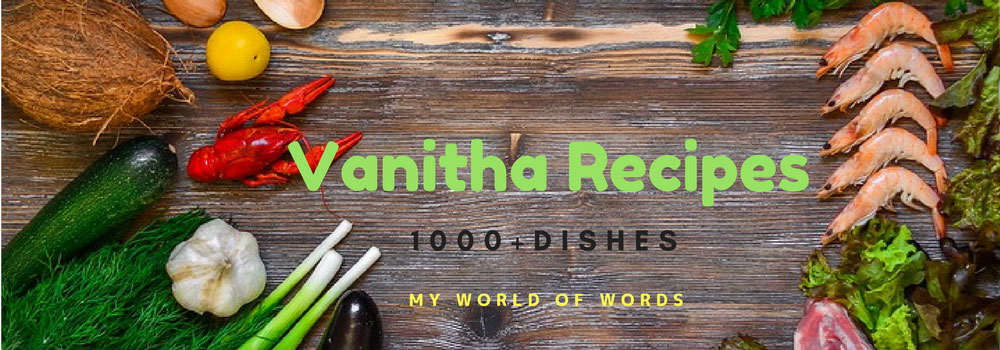
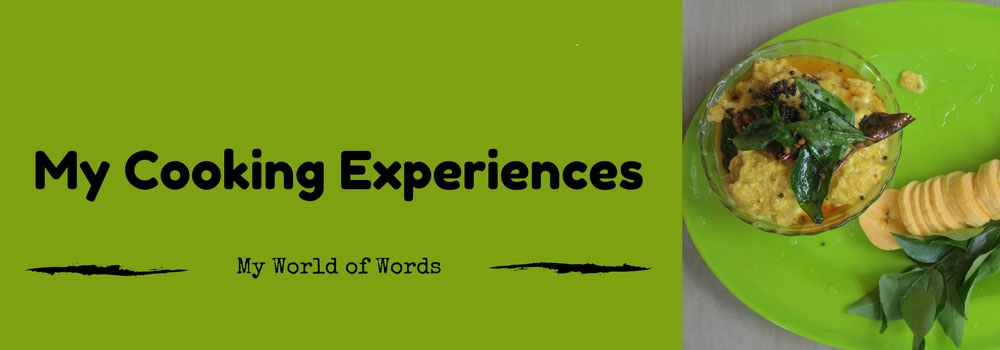


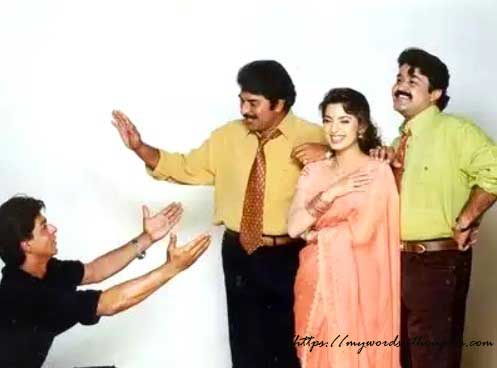

The memories of a good sadya takes you through the nostalgic memories of Kerala. I had been to one such wedding sadya of one of my relatives. That was ‘the best’ sadya i ever had in my life.More importantly people at the wedding were talking more about the food and less about the bride and groom. The cook was not from any shop or catering service. He was one of those traditional cooks in Kerala who just prepares food for weddings, not under any brands / hotels. May be that is why his dishes were authentic and were lip smacking. I don’t know his name but can get it if somebody really wants to give an awesome sadya for wedding. Thanks. Anoop 8129.535.838
Nice to know. BTW, are you not from Kerala?